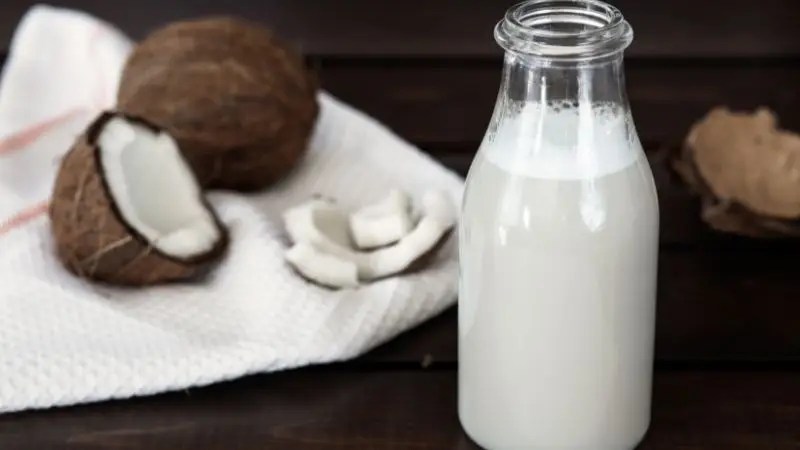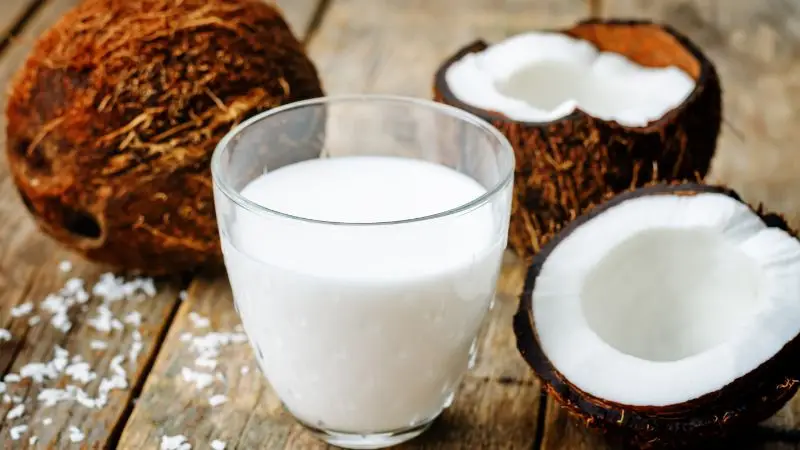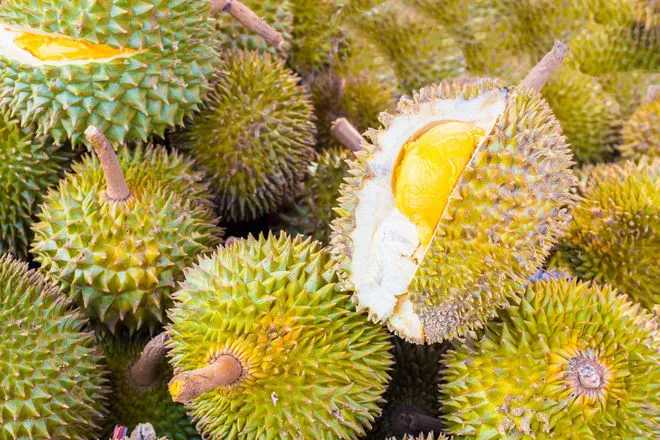Coconut milk, a creamy and luscious liquid extracted from the meat of coconuts, has become a star in the culinary world. Its unique taste and versatility make it a favorite among those exploring diverse flavors in their dishes. In this article, we’ll dive deep into the taste of coconut milk, its composition, culinary uses, and much more.
Must Read: How to Make Coconut Water
Composition of Coconut Milk
Coconut milk isn’t just a single-note liquid; it’s a complex mixture crafted from the white flesh of coconuts. The process involves blending coconut meat with water and extracting the resulting liquid. This milk is rich in essential nutrients, including fats, vitamins, and minerals, making it not only delicious but also nutritious.
The Flavor Profile of Coconut Milk
When it comes to taste, coconut milk offers a delightful experience. It boasts a subtly sweet and nutty flavor, with a hint of tropical goodness. Unlike dairy milk, coconut milk is lactose-free, making it a fantastic option for those with lactose intolerance. Its taste is distinct, and it adds a touch of the exotic to any dish.
Comparing coconut milk with other milk alternatives, it stands out with its unique flavor profile. Almond milk may be nutty, soy milk might be earthy, but coconut milk brings a tropical twist to the table.
Versatility in Cooking
One of the remarkable aspects of coconut milk is its versatility in the kitchen. Used in a variety of cuisines, it enhances the taste of both savory and sweet dishes. From curries to desserts, coconut milk adds a velvety texture and a rich depth of flavor. Whether you’re cooking Thai, Indian, or Caribbean cuisine, coconut milk is a must-have ingredient.
To truly appreciate the taste of coconut milk, experimenting with different recipes is key. Try a coconut milk-based curry, a coconut-infused smoothie, or a coconut milk-based dessert. The possibilities are endless.
Health Benefits of Coconut Milk
Apart from its delightful taste, coconut milk brings health benefits to the table. It’s a good source of healthy fats, promoting heart health. The medium-chain triglycerides (MCTs) found in coconut milk are easily digestible and provide a quick source of energy.
Compared to other non-dairy alternatives, coconut milk often stands out nutritionally. It contains vitamins like C, E, and B, and minerals such as magnesium and potassium. All these elements contribute to overall well-being.

Culinary Uses Beyond Cooking
Coconut milk isn’t confined to savory dishes alone; it also finds its way into beverages and desserts. Creamy coconut milk adds a luxurious touch to coffee, and it’s a key ingredient in tropical cocktails. When it comes to desserts, coconut milk is a star player in creating velvety ice creams, puddings, and cakes.
The taste of coconut milk can transform a regular dish into a tropical treat. Its sweet, nutty flavor complements both warm and cold preparations, making it a versatile choice in the kitchen.
Popular Myths About Coconut Milk Taste
Despite its widespread popularity, coconut milk is not immune to myths and misconceptions. One common misconception is that all coconut products taste the same. Coconut water, for example, has a vastly different taste profile than coconut milk. It’s essential to distinguish between these products to appreciate their unique qualities fully.
Another myth is that coconut milk is overpowering in flavor. In reality, coconut milk adds a subtle and pleasant taste to dishes without dominating the other ingredients. Understanding these myths helps in using coconut milk more confidently in various recipes.
Consumer Preferences
The taste of coconut milk appeals to many, but preferences can vary. Some love its tropical notes, while others might find it an acquired taste. The key to enjoying coconut milk is experimenting with it in different dishes and finding the right balance with other flavors.
Common concerns include the fear of it being too fatty or high in calories. However, when used in moderation, coconut milk can be a healthy addition to a balanced diet. It’s essential to consider individual preferences and dietary needs when incorporating coconut milk into daily meals.
Coconut Milk Varieties
Not all coconut milk is created equal. Canned and fresh coconut milk differ in taste and consistency. Canned coconut milk tends to be thicker and more concentrated, adding a rich texture to dishes. Fresh coconut milk, on the other hand, has a lighter consistency and a slightly sweeter taste.
The brand can also influence the taste of coconut milk. Some brands might prioritize a creamier texture, while others focus on a more authentic coconut flavor. Exploring different brands and types can help find the perfect coconut milk for specific recipes.
Incorporating Coconut Milk into Daily Diet
For those new to using coconut milk, starting with smaller quantities in familiar dishes is a good approach. Add it to smoothies, soups, or coffee to experience its taste gradually. The goal is to find a balance that enhances the overall flavor without overwhelming the palate.
Coconut milk can be a game-changer for those seeking dairy alternatives or wanting to explore new culinary horizons. Here are some tips for seamlessly incorporating coconut milk into your daily diet:
Start with Small Quantities: Begin by incorporating small amounts of coconut milk into your recipes. This allows you to get accustomed to its flavor without overpowering your dishes.
Experiment with Smoothies: Add coconut milk to your morning smoothies for a tropical twist. Blend it with fruits like mangoes, pineapples, and bananas for a refreshing and nutritious beverage.
Soups and Stews: Coconut milk can elevate the taste of soups and stews. Whether it’s a Thai-inspired coconut curry soup or a hearty coconut-infused vegetable stew, the possibilities are endless.
Coffee Upgrade: Enhance your morning coffee by substituting regular milk with coconut milk. The result is a creamy and slightly sweet coffee experience that might just become your new favorite.
Baking Adventures: Explore baking recipes that use coconut milk. From coconut milk pancakes to coconut-infused cakes, the addition of this ingredient can bring a delightful twist to your baked goods.
Salads and Dressings: Create unique salad dressings using coconut milk. Combine it with lime juice, ginger, and a touch of honey for a zesty dressing that complements both leafy greens and fruit salads.
Blending Sweet and Savory: Don’t shy away from experimenting with both sweet and savory dishes. Coconut milk can seamlessly blend into both, offering a harmonious balance of flavors.
Cultural Significance of Coconut Milk
Beyond its culinary uses, coconut milk holds cultural significance in various parts of the world. In many tropical regions, coconut milk is not just an ingredient but a symbol of hospitality and celebration. It is used in traditional ceremonies, religious rituals, and festive occasions, showcasing its integral role in the cultural fabric.
Understanding the cultural context adds a layer of appreciation to the taste of coconut milk. It’s not merely an ingredient; it carries a rich history and tradition that enhances its value in different cultures.
Environmental Impact of Coconut Milk Production
As the popularity of coconut milk continues to rise, it’s essential to consider its environmental impact. Sustainable practices in coconut milk production, such as responsible farming and ethical sourcing, play a crucial role in minimizing the ecological footprint.
Consumers can contribute to sustainability by choosing products from brands that prioritize eco-friendly practices. This ensures that the enjoyment of coconut milk aligns with a commitment to environmental conservation.
DIY Coconut Milk Tasting Experience
Create a unique coconut milk-tasting experience at home. Purchase different varieties, including canned and fresh coconut milk from various brands. Set up a tasting session with friends or family, exploring the nuances in taste, texture, and aroma. This DIY approach allows you to appreciate the diversity within the world of coconut milk.
Pairing coconut milk with complementary flavors enhances the tasting experience. Consider including tropical fruits, nuts, or even dark chocolate to create a sensory journey that goes beyond a mere culinary adventure.
Common Missteps When Using Coconut Milk
While coconut milk is a versatile ingredient, there are common missteps to avoid in the kitchen:
Overusing in Savory Dishes: While coconut milk can enhance savory dishes, using too much can overwhelm the palate. Balance is key to achieving the desired taste without making the dish too heavy.
Not Shaking Canned Coconut Milk: Canned coconut milk often separates, with the cream rising to the top. Shake the can well before use to ensure a consistent texture in your recipes.
Substituting in All Recipes: While coconut milk is a fantastic substitute, it may not work in every recipe. Consider the flavor profile of the dish before incorporating coconut milk to maintain harmony.
Conclusion
In conclusion, the taste of coconut milk is a delightful journey into tropical flavors. Its unique profile, versatility in cooking, and health benefits make it a valuable addition to any kitchen. Whether you’re a culinary enthusiast or someone seeking a dairy alternative, coconut milk opens up a world of possibilities.
Exploring coconut milk goes beyond taste; it’s an exploration of cultures, sustainability, and culinary creativity. Embrace the exotic allure of coconut milk, experiment with recipes, and savor the richness it brings to your table.
FAQs
- Is coconut milk high in calories?
Coconut milk is rich in calories due to its fat content, but when consumed in moderation, it can be part of a healthy diet. - How does canned coconut milk differ from fresh?
Canned coconut milk is thicker and more concentrated, while fresh coconut milk has a lighter consistency and a slightly sweeter taste. - Can coconut milk be used in both sweet and savory dishes?
Yes, coconut milk is incredibly versatile and can enhance the flavor of both sweet and savory dishes. - What’s the environmental impact of coconut milk production?
Sustainable practices, such as ethical sourcing and responsible farming, can minimize the environmental impact of coconut milk production.











